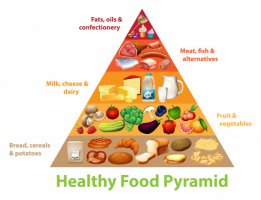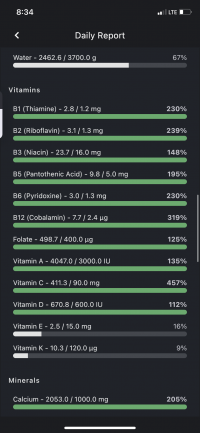As I continually obsess over macro and micro nutrients in Cronometer, I have begun to notice the best way to reach most recommended levels (B1, Folate, Copper, Magnesium and Manganese in particular) is to consume fortified grains and breads I.E. white bread, plain bagels, oatmeal, cereal, etc.
After these foods, consuming one meal with Steak, Potatoes, Butter and Milk should cover just about all macro and micro nutrients. Throw in some OJ and other fruits and you’ll be rock solid.
As I came to this conclusion, I realized this is exactly what the “Food Pyramid” suggests...minus the veggies
Just some food for thought :)
After these foods, consuming one meal with Steak, Potatoes, Butter and Milk should cover just about all macro and micro nutrients. Throw in some OJ and other fruits and you’ll be rock solid.
As I came to this conclusion, I realized this is exactly what the “Food Pyramid” suggests...minus the veggies
Just some food for thought :)



